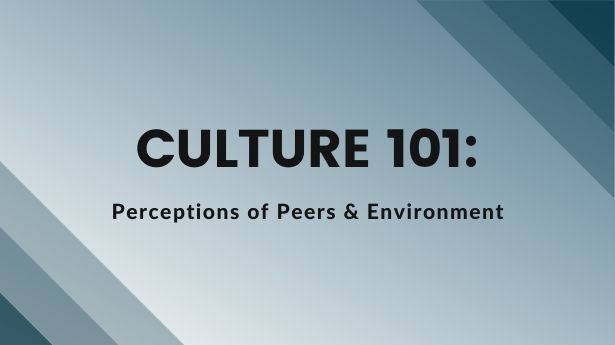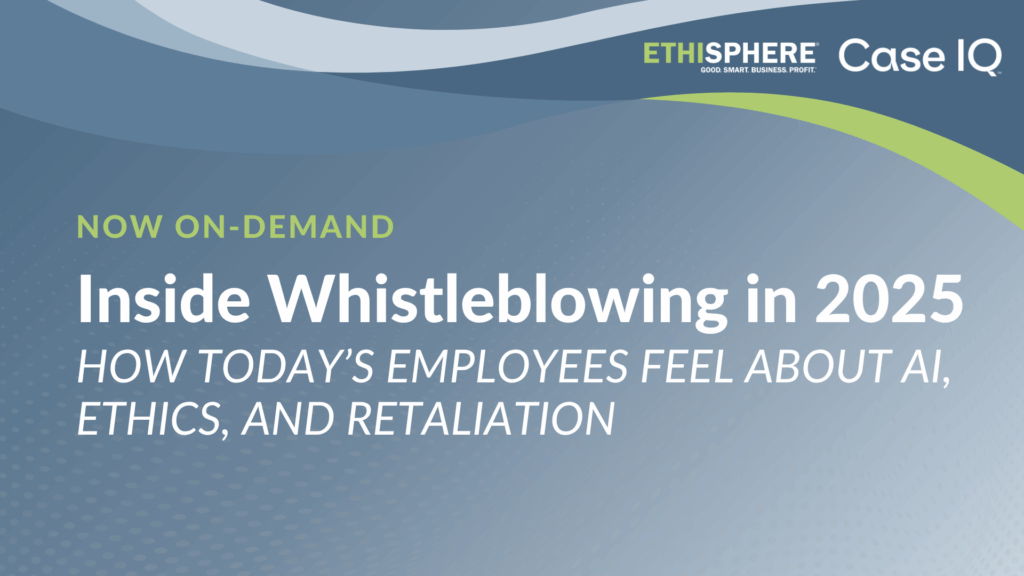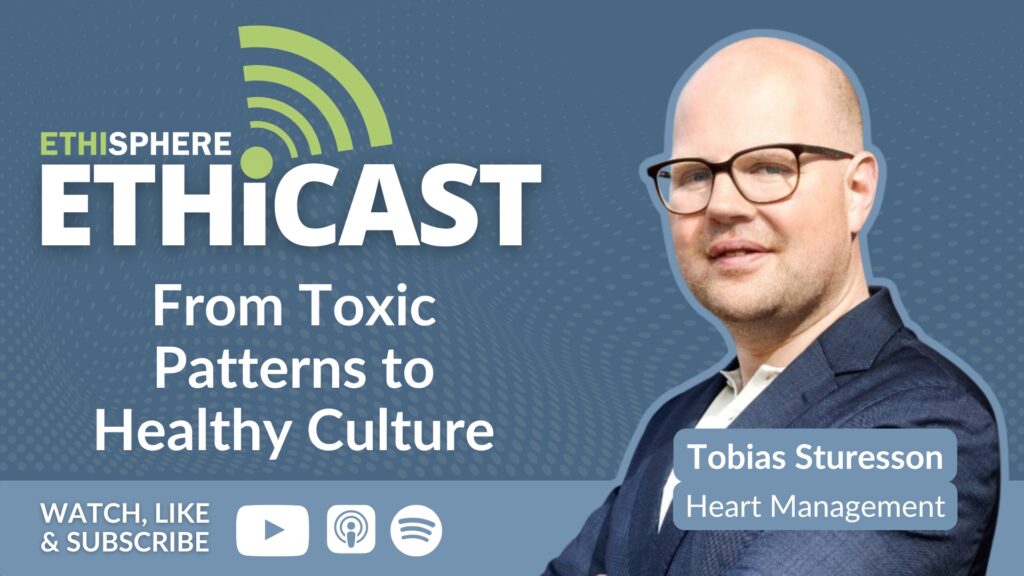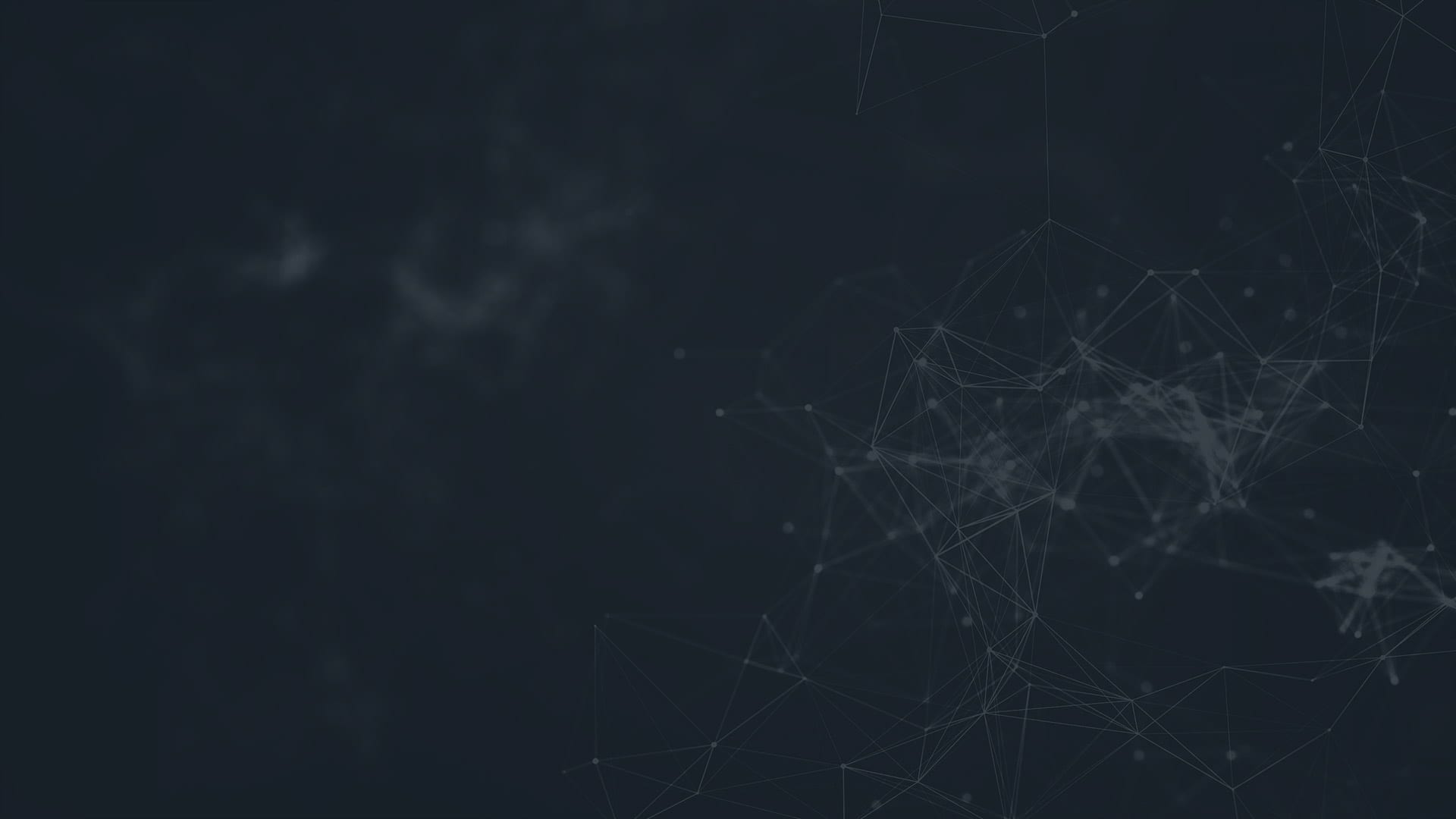
8 Ways to Elevate Ethical Culture: Measuring the Perceptions of Peers and Environment

AUTHOR:
Erica Salmon Byrne, J.D.
President
In this series, we share insights into the eight pillars that make up a robust ethical culture. Our eight pillars seek to get at the key metrics of a strong ethical culture: do your employees understand what is expected of them, do they know where to go if they have questions, and if they need help or have made a mistake, do they trust the process enough to ask for it?
Today’s post focuses on perceptions of peers and environment.
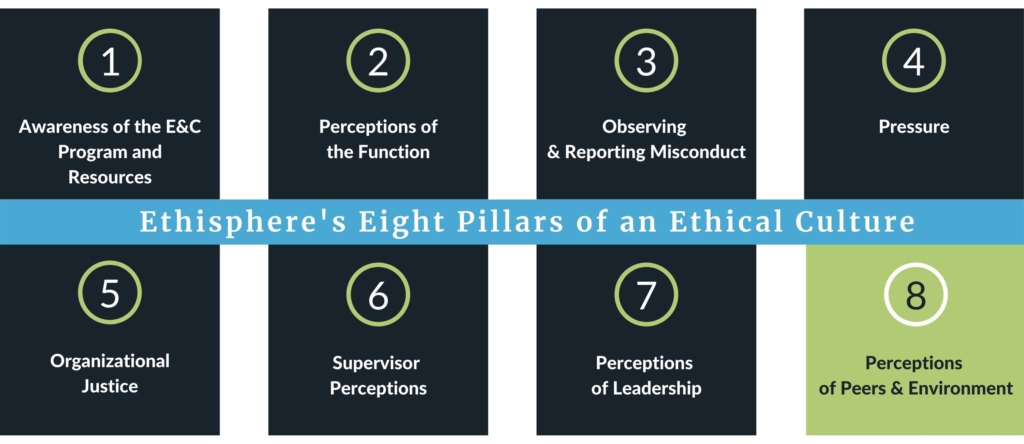
Pillar Eight: Perceptions of Peers and Environment
What we aim to measure:
Employee perceptions of their peers and the environment in which they’re doing their day-to-day work.
Types of questions we ask:
- I believe my co-workers act ethically.I believe senior leadership acts ethically.
- I feel a personal responsibility to act ethically.
Why it matters:
The environment in which we work – much like the manager we work for (see Pillar 6) – influences our behavior on a daily basis. Accepted behavior being modeled by co-workers, and not commented on by management, will undermine a formal values system quickly. Those interested in this topic of informal values should see the work of Francesca Gino and Max Bazerman, and then use data from this pillar to identify places where informal systems might be working against the formal ones.
What the data says:
This pillar tends to be an area of strong performance for most companies, with less favorable responses tending to coalesce in “neutral” or “neither agree nor disagree” concentrations as opposed to actively negative perceptions.
83 percent of surveyed participants believe that their co-workers act ethically at all times, with 13 percent responding neutrally
91 percent of survey participants feel personally responsible for making sure the company behaves ethically
As noted, the bulk of non-favorable responses in this category tend to be neutral. What we generally find when we dig into that data is most employees say they don’t know enough of how their co-workers are acting to respond affirmatively. This is a trend we have seen exacerbated by the pandemic, with an increasing share of employees working remotely and therefore intentionally distanced from co-workers.
How Ethisphere clients have used the data/insights:
Organizations typically use the data from this pillar to identify those locations where that challenge of distance seems largest, and then review with local leaders the extent to which they are engaging in storytelling when sharing goals with employees. Do they explicitly talk about ethical decisions they have made or how they might handle a given situation? Do they challenge behavior appropriately? Do employees see that behavior that is not in line with the stated values of the organization is addressed?
Expert tips for your program:
- Use demographics to identify where your greatest opportunities lie. Is it by region, by brand, or by location? Perhaps by tenure?
- Talk to local leaders about how to discuss decision-making with their teams. Shared experiences and learning at the local level allow for more informed decision-making.
- Peer to peer exchanges carry an enhanced level of validity, and thus are more likely to positively influence behavior.
Have questions about ethical culture? Schedule time to talk with an Ethisphere expert.
